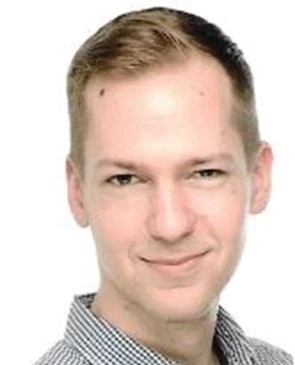Dr. Jan-C. Kamp, a clinician scientist, examines the pathobiology of vascular changes in pulmonary vascular diseases
Within the scope of the Clinician Scientist Program PRACTIS, the junior doctor is released from 50% of his duties in the Department of Pulmonary Medicine at Hannover Medical School for a period of three years. The focal point of his research work is the study of the pathophysiology of the serious Coronavirus (COVID-19) disease as well as alveolar capillary dysplasia (ACD), a rare cause of persistent pulmonary hypertension of the newborn (PPHN). With this lung development disorder, impaired development of alveolar sacs in the lung leads to incomplete maturation of the alveoli with interstitial, alveolar-septal accentuated fibrosis and wrongly located pulmonary capillaries. In those affected, this leads to an impaired gas exchange and impaired microcirculation. Affected newborns often die within the first days of life and only in exceptional cases is there the possibility of a lung transplant as a last resort. In approximately 60% of all cases, there are genetic variants of the transcription factor’s forkhead box F1 (FOXF1), which plays, amongst other things, an important role in the differentiation of the pulmonary mesenchyme. The exact pathophysiology of this disease is, however, still not yet completely understood.
Together with an interdisciplinary team, Dr. Kamp is involved in the research of these conditions. The researchers use multiomic analysis to study the molecular processes and signal pathways, which play a role in the pathophysiology of the disease. In addition, in cooperation with internal MHH and external cooperation partners, they use various imaging techniques for the 3D analysis of the pulmonary capillary architecture and lung parenchyma. „In the scientific work carried out by our team, I find it exciting that we can combine the knowledge from a wide variety of disciplines. With our know-how and the outstanding technical infrastructure within our working group, we can lay the foundation for a better understanding of these diseases“, says Dr. Kamp.
In a recently published study in The Lancet eBioMedicine, the researchers presented their findings on the pathophysiology of the serious COVID-19 disease and the altered fibrotic pulmonary tissue associated with it. Using synchrotron-based hierarchical phase-contrast tomography (HiP-CT) and other imaging techniques, such as various molecular techniques for the analysis of transcriptomes, proteomes and metabolomes, the researchers studied the lung tissue from patients who had died at various stages of their illness from a severe case of COVID-19 and compared these different types of pulmonary fibrosis or severe influenza A infection as well as with healthy control tissue. Taking this approach, a sequence of mechanisms and corresponding molecular changes could be worked out, leading to a better understanding of the fibrotic modification of the lung tissue occurring due to severe COVID-19. The researchers found extended thrombotic blockages of small branches of the pulmonary and bronchial arteries with secondary blood circulation insufficiency of the pulmonary lobes, subsequently leading to a significant expansion of the capillary network of the lung through a special type of new blood vessel formation, the so-called intussusceptive angiogenesis, which in turn contributes significantly to the subsequent fibrotic reconstruction of the lung tissue.
The role of intussusceptive angiogenesis in alveolar capillary dysplasia (ACD) was also studied by the researchers. In this particular type of formation of new blood vessels, contact occurs between facing endothelial cells within the capillaries, which leads to the formation of a tissue pillar within the blood vessel. By storing vasculogenic progenitor cells, this pillar spreads to become a septum and on to complete division of the capillaries into two new vessels. This mechanism allows an expansion of the vascular plexus within a few hours, rapidly resulting in improved perfusion and metabolic exchange capacity. An excessive expansion will, however, result in an aberrant alteration in the capillary network.
With the aid of a special technique - „microvascular corrosion casting“, Dr. Kamp and his working group have been able to show a high prevalence of intussusceptive pillars in the capillaries from ACD lung tissue. The reappraisal of the underlying molecular mechanisms of this alteration revealed increased activity of hypoxia-based signal pathways as well as an important role of TIE2-positive macrophages which are now being discussed as potential inductors of the intussusceptive (neo-) angiogenesis. The results of Dr. Kamp and his colleagues have been published in the renowned American Journal of Pathology.
Retrospectively, Dr. Kamp is more than satisfied with his funding within the PRACTIS Clinician Scientist Program, which has allowed him to fully focus on his research work for 18 months. After this very successful period, together with Dr. Lavinia Neubert from the Institute of Pathology, he has been entrusted with the joint leadership of the Lung Research Group. This follows the move of the previous working group leader, Prof. Dr. Danny Jonigk, who left the MHH on 01.09.2022 to become Director of the Institute of Pathology at the RWTH University of Aachen.
BREATH will again finance one of the Clinician Scientists for the next round. All information regarding applications can be found on the PRACTIS Homepage (Link).
Text: BREATH/AB
Photo: MHH/Tom Figiel

Clinician Scientist Dr. Jan-Christopher Kamp